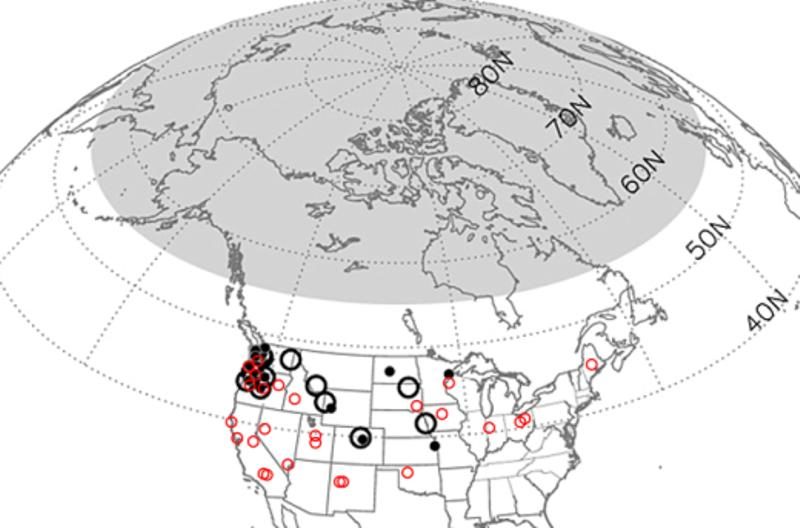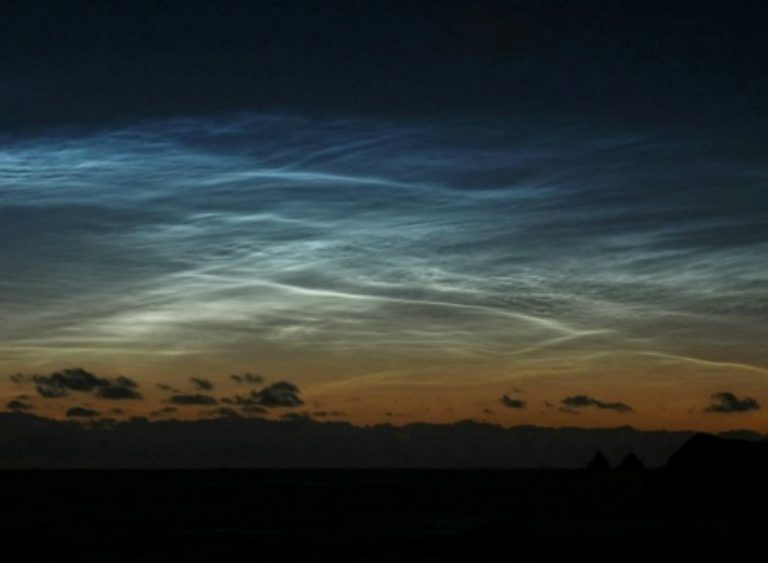Wilson is just wrapping up a year-long stint on the remote island where the Australian government maintains a research station to study climate change and wildlife. "According to John French of the Australian Antarctic Division Atmospheric Science Program, the only other photographic recording of NLCs from Macquarie Island was in the mid-1990s," she says.
NLCs are Earth's highest clouds. Seeded by meteoroids, they float at the edge of space more than 80 km above the planet's surface. NLCs form when summertime wisps of water vapor rise up to the edge of space and crystalize around specks of 'meteor smoke.' Prime time for sightings is June-July in the north, December-January in the south.
"It was a breathtaking moment when I first realized what I was seeing," recalls Wilson. "I spent two hours down by the ocean with a camera and tripod, adjusting ISO and lenses, trying to capture the extraordinary event. The clouds were so bright, I could see their reflection in the water."
Wilson's sighting caps a remarkable year for noctilucent clouds. Once confined to Earth's polar regions, NLCs have recently spread to lower and lower latitudes. In June 2019, the clouds appeared over Rome, Italy; Las Vegas, Nevada; Albuquerque, New Mexico; Paris, France; and outside Los Angeles, California. Many of the sightings smashed old records for low-latitude visibility.

No one knows why NLCs are so revved up. It could be a result of climate change and/or the solar cycle. Whatever the reason, get ready for more. The northern hemisphere season for NLCs is about to begin. Typically, the first electric-blue filaments are sighted in mid- to late-May followed by a sharp intensification in June. If recent trends continue, summer 2020 could be very special indeed.




Comment: Are noctilucent clouds increasing because of the cooling climate, and the rise of fireball and volcanic activity?